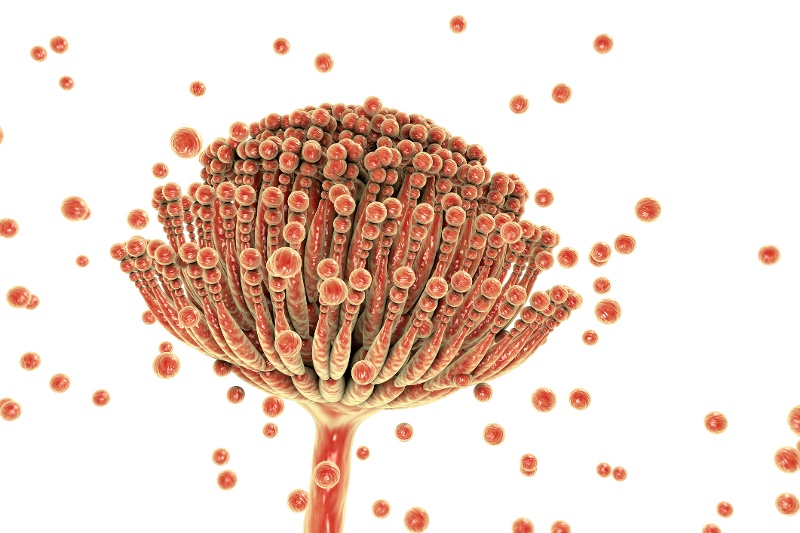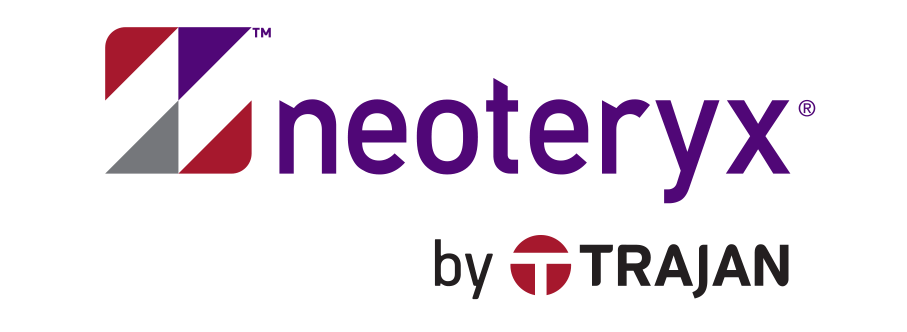Share this
monitoring mycotoxin exposure using VAMS
by James Rudge, PhD, Technical Director, Trajan on Mar 7, 2022 9:00:00 AM
An article published by Arnau Vidal et al at Ghent University, Belgium in the May 2021 issue of Toxins reported on a method for analysis of 24 mycotoxins found in popular food and drinks. The paper is entitled “Volumetric Absorptive Microsampling as an Alternative Tool for Biomonitoring of Multi-Mycotoxin Exposure in Resource-Limited Areas.”
It describes a method where dried blood samples collected on Mitra® devices based on VAMS® technology were compared to wet blood samples and then tested on 20 exposed blood samples. There were no “missed cases” of mycotoxin exposure observed with the VAMS extracts, which led the authors to conclude that VAMS finger-stick sampling may serve as a viable alternative to conventional venous sampling to evaluate multiple mycotoxin exposure.
 Mycotoxins and Mycotoxin Exposure
Mycotoxins and Mycotoxin Exposure
As the name suggests, mycotoxins are naturally occurring environmental toxins or chemical products synthesized from molds such as Aspergillus flavus and Aspergillus parasiticus. The toxins produced from molds can be found in a wide range of food and drinks, including fruits, nuts, coffee beans, grains and their related foods, such as cereals, baking products and pasta as well as beverages. Mycotoxins in these products can be hazardous to health and have been linked to a number of health concerns such as inflammatory complications, autoimmune diseases, and cancers.
Mycotoxins can occur in high concentrations in fungi, such as mushrooms, causing acute toxic effects. For example, the mortality rate after ingesting a certain dose of the mushroom Amanita phalloides, ranges from 25-50%. Furthermore, it has been reported that 250,000 deaths linked to exposure to Aflatoxin (found in foods such as nuts) are recorded annually in China and Sub-Saharan Africa. As a result, population monitoring of mycotoxin exposure is an important tool for public health to evaluate risk.
Measuring Mycotoxin Exposure from Blood Samples
Accessing blood samples in low- and middle-income countries to monitor mycotoxin exposure is difficult due to the scarcity of equipment and challenges with expensive cold chain shipping. Dried blood samples are a less expensive alternative because samples can be collected in remote areas without equipment and shipped at room temperature to centralized labs for testing.
The authors of the mycotoxin study at Ghent University reported that hematocrit biases have been reported in the literature for standard dried blood spot (DBS) sampling on filter paper. However, due to the volumetric nature of sample collection via Mitra devices with VAMS, the team commented that HCT independent extractions had been previously demonstrated for a wide range of analytes. Therefore, it was surmised that this technique would show a benefit over traditional DBS.
There are around 350-400 differing mycotoxins showing a wide heterogeneity of physicochemical properties. However, there are a number of papers showing that LC-MS/MS can be used to simultaneously measure mycotoxins. So, the team used a multiplex LC-MS/MS assay to measure mycotoxins from both wet and dried blood matrices.
Sample Extraction Study Methods & Findings
- An LC-MS/MS assay had been previously developed to measure all 24 mycotoxins.
- The group compared data from wet and dried blood.
- Due to the photosensitivity of many mycotoxins, when sampling with Mitra, the samples were dried in the dark under a desiccant.
- The wet blood samples were extracted using a liquid-liquid extraction technique, whereas for the dried samples the authors used a mix of acetonitrile, water, and acetic acid.
- The method was validated in accordance with FDA recommendations.
- Although a number of the mycotoxins performed well on Mitra, due to high method uncertainty for several analytes, it was concluded that this multi-mycotoxin approach would work well as a screening tool, rather than as a fully quantitative assay.
- In terms of short- and long-term stability, recoveries from dried samples ranged between 70-120% between 7-21 days and the group commented that “good stability results imply that VAMS can be used to assess mycotoxin exposure in blood in resource-limited areas.”
- As hoped, there was no hematocrit dependence shown on the VAMS samples.
- When measuring from 20 exposed blood samples:
- Five mycotoxins were detected in 20 blood samples for both liquid blood and VAMS. It must be noted that at the LLOQ levels, a number of false negatives were seen for both techniques.
- Although the LOD and LLOQ was demonstrated to be higher for some mycotoxins on VAMS compared to Liquid blood samples, no exposed mycotoxin cases were missed in the cohort.
Study Authors’ Discussion and Conclusions
- This was the first application of VAMS for mycotoxin analysis.
- Several common mycotoxins (DON, OTA, AF and FB) could not be fully validated on the dried matrix.
- Absorption of blood on VAMS and during extraction was hematocrit independent.
- When analyzing a cohort of 20 samples comparing liquid blood and dried blood, no missed cases were observed with the dried blood.
- The authors stated, “VAMS sampling can serve as an excellent alternative to conventional venous sampling to perform a quantitative screening of mycotoxin exposure.”
- They also mentioned that the work provides a solid basis for future studies.
- This approach has the potential to help with chronic exposure to multiple mycotoxins.
Final Thoughts
When developing methods on dried blood, care must be taken to focus on the dried hematocrit matrix. Extraction methodologies must be optimized for all analytes developed and this is dependent, amongst other parameters, on the physicochemical properties of the analytes.
Developing multiplex assays on mycotoxins is a challenge due to the wide physicochemical properties observed. Therefore, the authors of this study must be commended for developing an extraction method which delivered high extraction efficiencies for many of the diverse molecules tested. Moreover, hematocrit independence for all analytes tested was shown.
This work has provided a method that has the potential to act as a stable screening tool for mycotoxins in resource limited areas, which will help to identify at-risk populations to allow for appropriate interventions.
This study paper was summarized for our readers by James Rudge, PhD, Neoteryx Technical Director. This is curated content. To learn more about the important research outlined in this review, visit the original article published in the journal, Toxins.

Image Credit: Mycotoxin aspergillus, iStock Images.
You can access this paper and others on studies that apply microsampling in our Technical Resource Library.
Share this
- Microsampling (206)
- Research, Remote Research (119)
- Venipuncture Alternative (105)
- Clinical Trials, Clinical Research (83)
- Mitra® Device (73)
- Therapeutic Drug Monitoring, TDM (51)
- Dried Blood Spot, DBS (39)
- Biomonitoring, Health, Wellness (30)
- Infectious Disease, Vaccines, COVID-19 (24)
- Blood Microsampling, Serology (23)
- Omics, Multi-Omics (21)
- Decentralized Clinical Trial (DCT) (20)
- Specimen Collection (18)
- Toxicology, Doping, Drug/Alcohol Monitoring, PEth (17)
- Skin Microsampling, Microbiopsy (14)
- hemaPEN® Device (13)
- Preclinical Research, Animal Studies (12)
- Pharmaceuticals, Drug Development (9)
- Harpera Device (7)
- Industry News, Microsampling News (5)
- Antibodies, MAbs (3)
- Company Press Release, Product Press Release (3)
- Environmental Toxins, Exposures (1)
- July 2025 (1)
- May 2025 (1)
- April 2025 (2)
- December 2024 (2)
- November 2024 (1)
- October 2024 (3)
- September 2024 (1)
- June 2024 (1)
- May 2024 (1)
- April 2024 (4)
- March 2024 (1)
- February 2024 (2)
- January 2024 (4)
- December 2023 (3)
- November 2023 (3)
- October 2023 (3)
- September 2023 (3)
- July 2023 (3)
- June 2023 (2)
- April 2023 (2)
- March 2023 (2)
- February 2023 (2)
- January 2023 (3)
- December 2022 (2)
- November 2022 (3)
- October 2022 (4)
- September 2022 (3)
- August 2022 (5)
- July 2022 (2)
- June 2022 (2)
- May 2022 (4)
- April 2022 (3)
- March 2022 (3)
- February 2022 (4)
- January 2022 (5)
- December 2021 (3)
- November 2021 (5)
- October 2021 (3)
- September 2021 (3)
- August 2021 (4)
- July 2021 (4)
- June 2021 (4)
- May 2021 (4)
- April 2021 (3)
- March 2021 (5)
- February 2021 (4)
- January 2021 (4)
- December 2020 (3)
- November 2020 (5)
- October 2020 (4)
- September 2020 (3)
- August 2020 (3)
- July 2020 (6)
- June 2020 (4)
- May 2020 (4)
- April 2020 (3)
- March 2020 (6)
- February 2020 (3)
- January 2020 (4)
- December 2019 (5)
- November 2019 (4)
- October 2019 (2)
- September 2019 (4)
- August 2019 (4)
- July 2019 (3)
- June 2019 (7)
- May 2019 (6)
- April 2019 (5)
- March 2019 (6)
- February 2019 (5)
- January 2019 (8)
- December 2018 (3)
- November 2018 (4)
- October 2018 (7)
- September 2018 (6)
- August 2018 (5)
- July 2018 (8)
- June 2018 (6)
- May 2018 (5)
- April 2018 (6)
- March 2018 (4)
- February 2018 (6)
- January 2018 (4)
- December 2017 (2)
- November 2017 (3)
- October 2017 (2)
- September 2017 (4)
- August 2017 (2)
- July 2017 (4)
- June 2017 (5)
- May 2017 (6)
- April 2017 (6)
- March 2017 (5)
- February 2017 (4)
- January 2017 (1)
- July 2016 (3)
- May 2016 (1)
- April 2016 (2)


No Comments Yet
Let us know what you think